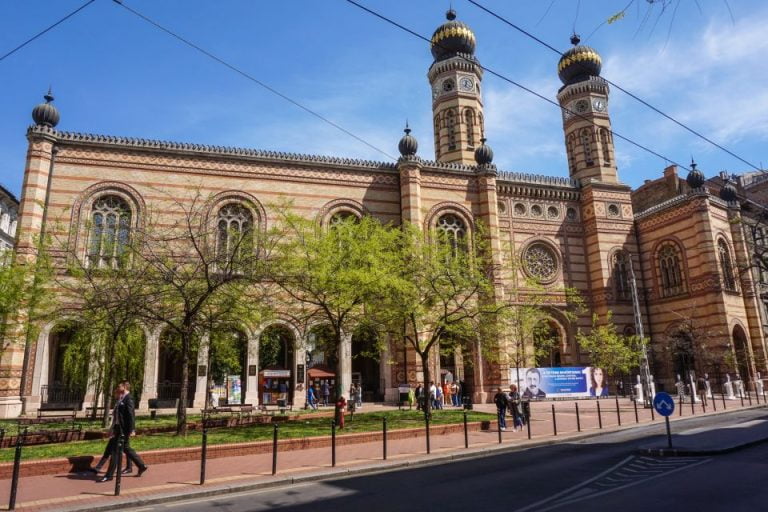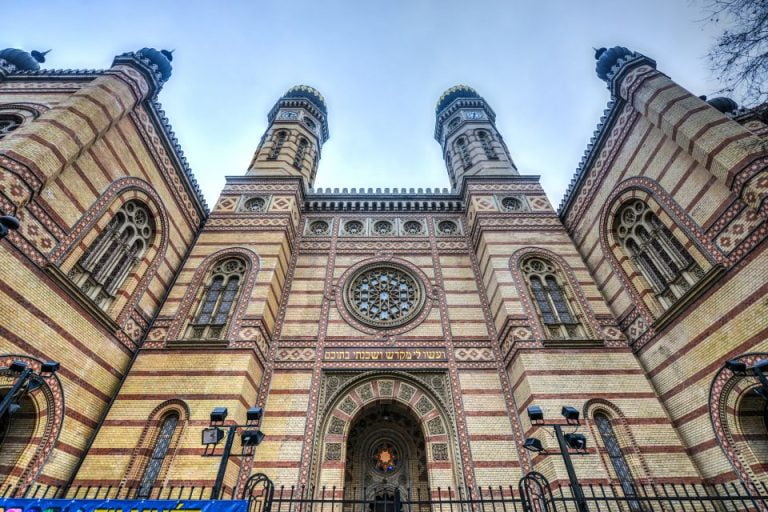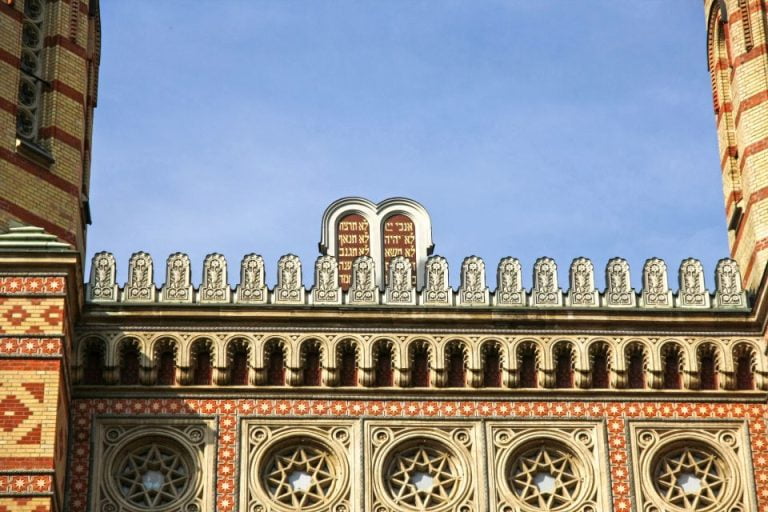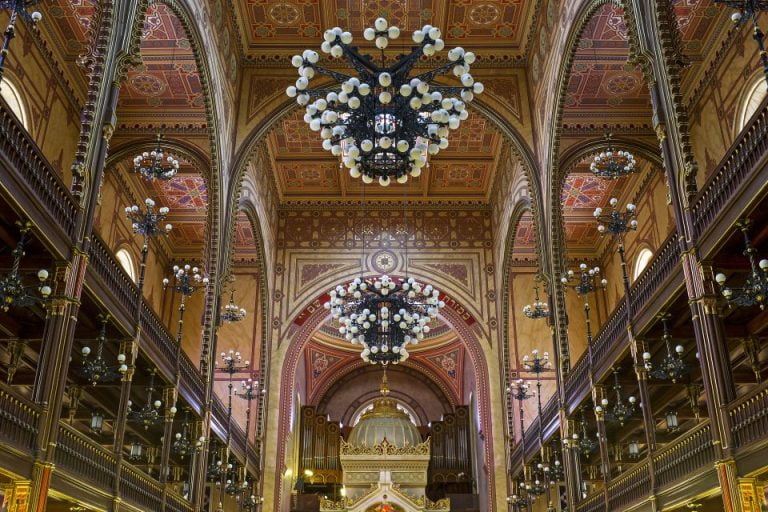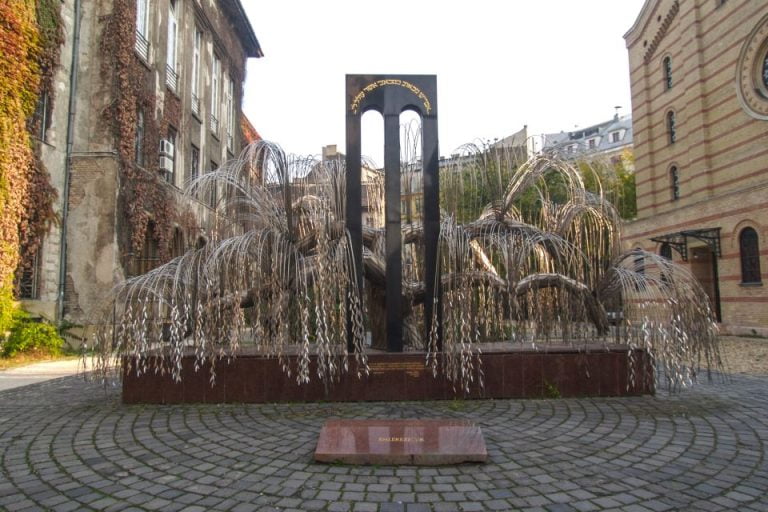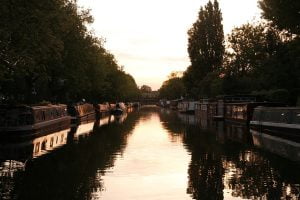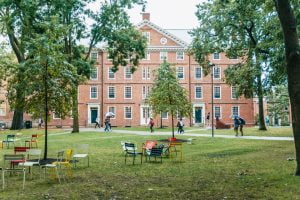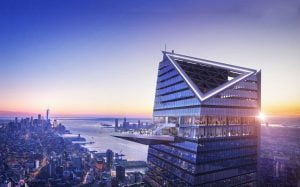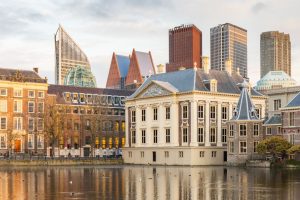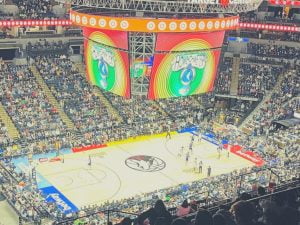The Great Synagogue of Budapest
Tour in Hebrew in the largest synagogue in Europe
When visiting the magical city of Budapest, nestled pastorally on the banks of the raging Danube River, it is impossible not to come across the Great Synagogue, a magnificent iconic building that seems to have been taken from a mystical fairy tale. The magnificent building stands proudly and tells its visitors a fascinating story about sadness and joy, about pain and emotion, about an extensive Jewish community that filled its magnificent spaces. The magnificent building is not only a symbol of the rich Jewish history of Budapest, but a symbol of the resilience of Judaism, of its continued existence despite the difficult events that befell the residents of the local Jewish community.
So let's go on an exciting journey in the largest synagogue in Europe, the place where Theodore Herzl received his Torah in his own right, the Great Synagogue in Budapest:
The historical story of the Great Synagogue:
Between the walls of Budapest's magnificent synagogue, in the vibrant urban landscape of the city, lies a fascinating story that spans years and cultures. This story unfolds the life of the Dohany Street Great Synagogue, an architectural masterpiece that played a unique role in the city's historical narrative.
The great synagogue begins to be built in 1854, a time when the life of the Jewish community in the city was lively and full. By the end of the century, about 200,000 Jews lived in the city, making up over 20 percent of the local population.
The construction of the magnificent synagogue was entrusted to the Austrian architect Ludwig Forster, who dreamed of a magnificent design in a Moorish romantic style, and he drew inspiration from prestigious architectural buildings in North Africa and Spain. During five years of construction, Forster's architectural dream is slowly coming true, brick by brick, as is the dream of the city's Jews, who were privileged to build a magnificent synagogue that opened for prayers in 1859.
The magnificent synagogue quickly transforms from a spectacular architectural wonder into the beating heart of the city's Jewish community, serving as its home and a vibrant cultural center. Try to imagine the main prayer hall filled with the voices of 3,000 worshipers chanting prayers and songs that echo off the decorated walls of the synagogue.
The Jewish community is developing and growing, and the Great Synagogue gets to see the residents of the community celebrate the Jewish holidays, coming of age, and marriage celebrations.
After years of relative peace, everything is about to be shaken with the onset of the Holocaust, the Second World War that casts a dark shadow over Budapest's thriving Jewish community.
During the war years, the area of the Jewish quarter in the city became a ghetto, where the city's Jews lived densely and in terrible conditions, and many lost their lives in the ghetto or later, when they were sent to extermination camps. The Great Synagogue was damaged during the war but not completely destroyed, and after the war it was extensively renovated with the help of the Hungarian Jewish community.
Evidence of the Holocaust period can be found on a tour around the synagogue, where you will find the Hungarian Jewish Museum and the Holocaust Memorial Room. In the backyard of the synagogue is the Holocaust Memorial Park, named after Raul Wallenberg, a Swedish diplomat who saved thousands of Jews during the war.
One of the highlights of the visit to the synagogue is the Tree of Life monument, a weeping Arab sculpture that displays the names of the Holocaust victims.
The Great Synagogue of Budapest stands today not only as a place of religious worship, but as a symbol of the strength and resilience of the Jewish community and the multicultural history of the city of Budapest. The magnificent building with its many decorated spaces alongside its historical significance make it a central landmark in the city that attracts tourists and visitors from all over the world.
Visiting the Great Synagogue:
A visit to the Great Synagogue of Budapest will take you to appreciate its many magnificent spaces, alongside its spectacular monuments and monuments.
Already from the outside you can see that the Great Synagogue is no longer a synagogue. The magnificent structure, which drew inspiration from North African Islamic art, boasts an amazing facade built of red-yellow bricks. You will be able to recognize from a distance the two towers of the synagogue, which rise to a height of 43 meters and overlook the magical city. The front of the church is decorated with a unique mosaic-brick work, and at the entrance to the synagogue you will find the inscription "And they made me a temple and I lived in them".
When you go inside you will discover the main hall, which can accommodate close to 3,000 people. This beautiful hall boasts a beautiful vaulted ceiling decorated with intricate golden patterns. The Ark of the Covenant, located on the eastern side of the synagogue, is considered a masterpiece of complex woodwork. In the central space of the synagogue you will find an organ, a distinct church element, which was used by the synagogue for prayers and events. The original organ was played by, among others, the famous Hungarian composer Franz Liszt. The organ that stands today in the synagogue is not the original organ, it was damaged and destroyed in World War II and replaced by a smaller one.
Between the walls of the magnificent synagogue is Hungarian Jewish Museum and Archives, containing a large collection of Jewish artifacts, displayed in historical exhibitions that reflect the rich heritage of Hungarian Jewry.
Instead you will also find "Heroes' Temple", a tiny octagonal-shaped synagogue built in 1931 in memory of the Hungarian Jewish soldiers who lost their lives in the First World War. Today the small synagogue is used as an additional prayer hall.
Don't miss the Holocaust Memorial Room, which presents a collection of personal items, photographs and documents that tell synagogue visitors about the tragic period in which over 6,000,000 Jews lost their lives.
After that, keep walking to Raoul Wallenberg Holocaust Memorial Park, a beautiful and exciting park named after a Swedish diplomat Hasid of the Nations.
The Weeping Willow Monument:
In the park, which is in the backyard of the synagogue, you will find The Weeping Willow Monument which is considered one of the highlights of the visit to the synagogue.
This monument, also called the "Tree of Remembrance", was created in 1991 by the Hungarian artist and sculptor Imre Varga. It is actually a steel sculpture of a weeping willow tree, which represents the sorrow and heavy mourning over the tragic period of the Holocaust.
When you approach the Weeping Willow statue, you will notice that the tree is made up of 30,000 leaves, each of which has the name of a Hungarian Jew who was murdered in the Holocaust written on it. The base of the statue is designed as an upside down menorah, and on the marble base that surrounds it are quotes about the tragic Holocaust period. The Tree of Remembrance serves as a memorial to those who were murdered during the Holocaust, alongside the reminder that the Jewish people have strong roots, and continue to live and develop even after the horrific period.
You will finish the visit in the Jewish cemetery, which is located inside the synagogue complex, and where 2281 Jews who lost their lives in the Budapest ghetto during World War II are buried, despite the prohibition of burials on synagogue grounds.
Guided tour in Hebrew at the Jewish Synagogue in Budapest:
The price of the entrance ticket to the synagogue also includes guided tours that are available in different languages, including Hebrew and English. At the site's ticket office, you can find out about the times of the tours that usually go out many times a day.
The tour begins at the exterior of the synagogue, where you can appreciate its amazing architecture, along with in-depth instruction on the idea of building the synagogue and its special design.
When you go inside, you will explore together with your guide the large prayer hall, the stage and the special organ, and you will hear fascinating stories about special customs and the history of the magnificent synagogue.
The tour will also take you to the Hungarian Jewish Museum, where you will learn about the religious, historical and cultural heritage of the Jewish community in Hungary.
You will end the tour at the Holocaust Memorial Park at the Weeping Willow Monument, where you will hear from the guide the story of the monument alongside intimate personal stories of several victims of the atrocities.
The guided tours usually last between 45 minutes and an hour.
The Great Synagogue - important information:
שעות פתיחה: The Great Synagogue is open Sunday-Friday, and is closed on Saturdays. The opening hours of the synagogue change between the months of the year and you should be updated on the updated opening hours on the official website of the synagogue. You can enter the synagogue up to an hour before the website closes.
.: The Great Synagogue is located at the beginning of the Jewish quarter in the city, in the center of Budapest. The synagogue can be reached on foot from the sites of the city center of Budapest, or by means of convenient public transportation. The closest metro station to the synagogue is the central Astoria station, which is about a 5-minute walk from it. Tram lines 47 and 49 also stop at this station.
The entrance ticket includes entry to the many synagogue complexes, and a guided tour in different languages, including Hebrew.
Children under the age of 6 enter the synagogue for free.
You must arrive in respectful clothing to the synagogue, no tank tops or shorts.
Please note that there is a security check at the entrance to the synagogue.
It is highly recommended to order tickets in advance, as the queues to enter the place can be long all months of the year.
Questions and Answers:
This is the largest synagogue in Europe and the fifth largest in the world. A magnificent synagogue that is designed in a spectacular architectural style and contains special monuments alongside a museum and unique monuments.
The entrance ticket to the synagogue includes a guided tour in various languages, including Hebrew, which departs several times a day. You can also visit the synagogue independently, but the recommendation is to combine the guided tour with an independent visit to the synagogue.
Yes. You must arrive in respectful clothing, no tank tops or shorts. Men are required to wear a kippah which is distributed upon entering the site.
In addition to the synagogue itself, the complex includes a museum and archive of Hungarian Jewry, a small and fascinating synagogue called the "Temple of Heroes", a Holocaust memorial room, a cemetery and a Holocaust memorial park with a magnificent monument.
Combine the visit to the Great Synagogue with a visit to the vibrant Jewish Quarter area, the streets of the Jewish Quarter which are full of authentic Israeli restaurants alongside interesting sites, and the Szimpla Kert bar, which in the evenings becomes a lively nightlife hub where you will find colorful bars located inside a beautiful abandoned building.
In conclusion, even if you fled the country for a short vacation of a few days, and you feel like getting away from any Israeli landmarks and getting the most authentic experience on the trip, do not miss a visit to the Great Synagogue of Budapest, which is undoubtedly one of the most exciting and special sites you will ever visit. The synagogue is a magnificent monument that tells the story of the Jewish people, a testimony to the city's past and the resilience of our people. Whether you are history buffs, architecture buffs or curious travelers, the Great Synagogue offers a magnificent and exciting experience that will leave you enriched and enlightened.

